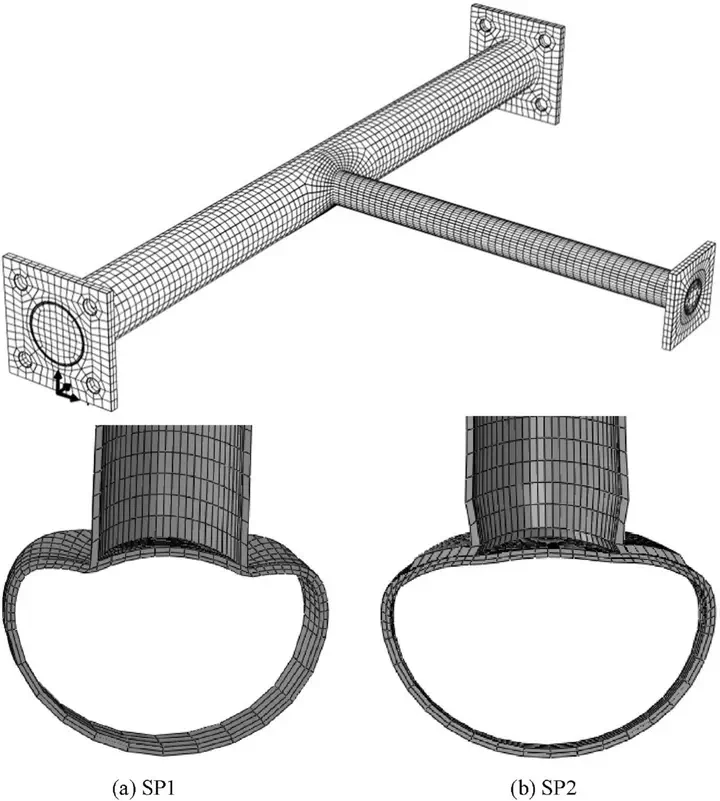 Finite Element Simulation
Finite Element Simulation
Abstract
The fire resistance behaviour of tubular T-joints is experimentally and numerically investigated. Two specimens are tested to failure under a constant brace axial load at elevated temperatures. One specimen is reinforced with a collar plate at the brace/chord intersection and the other is not reinforced. Both specimens have identical geometric and material properties for comparison. The failure modes of the specimens without and with reinforcement are the local indent of the chord and the local indent of the chord with axial yielding of the brace, respectively. In the numerical study, a finite element (FE) package ABAQUS with a sequentially coupled thermal stress analysis is adopted to simulate the joint specimens. The FE and experimental results for the critical temperature, fire endurance time and failure mode are in good agreement. The FE method is subsequently used to conduct a parametric study. The failure modes and load ratio have a significant influence on the fire resistance of the joint. Finally, the critical temperatures obtained from the experiment and the numerical simulation are compared with the proposed equation derived from CIDECT and Eurocode 3. It is found that the proposed equation provides a reasonable prediction of the critical temperature of tubular joints reinforced with collar plates at load ratios ranging from 0.2 to 0.6.